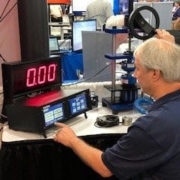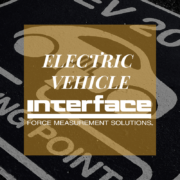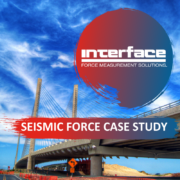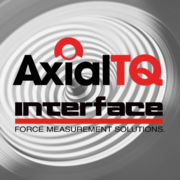Interface Powers Smart Transportation Solutions
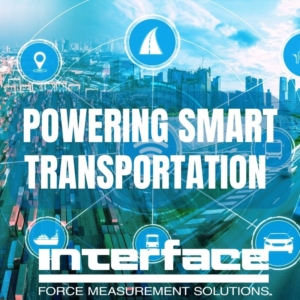 Smart transportation refers to integrating advanced technologies and intelligent systems in the transportation sector, including infrastructure and vehicles, improving efficiency, safety, and sustainability.
Smart transportation refers to integrating advanced technologies and intelligent systems in the transportation sector, including infrastructure and vehicles, improving efficiency, safety, and sustainability.
The transportation industry is getting smarter with advancements in autonomous driving and electric vehicles, unmanned aerial vehicles, electric airborne vehicles, high-speed trains and light rails, and transportation ways. Behind these innovations are critical test and monitoring solutions that help engineers ensure absolute safety and quality during development and in use for real-time monitoring.
Interface transducers measure force, torque, or weight for testing and integration into smart transportation systems. Our load cells, torque transducers, scales, load pins, tension links, and multi-axis sensors provide vital measurement data for design, development, testing, and performance monitoring in various smart transportation applications.
A few examples of smart transportation inventions and use cases that utilize Interface advanced sensor technologies include:
- Smart Cargo Monitoring: Load cells are installed in trucks, trailers, or shipping containers to monitor the weight and distribution of cargo. These load cells provide real-time data on the load’s weight, ensuring compliance with weight limits and preventing overloading, which can lead to safety hazards and increased fuel consumption.
- Structural Testing of Vehicles: During physical testing, load cells and torque transducers measure forces and loads applied to vehicle structures. This includes crash tests, structural integrity evaluations, and load capacity assessments. The data obtained helps engineers analyze vehicles’ structural performance and safety characteristics, enabling improvements in design and manufacturing processes for smart transport.
- Infrastructure Load Data Acquisition: Load cells can be employed in roads, bridges, and other transport infrastructure as part of the load data acquisition systems. These systems measure the dynamic forces and loads experienced by vehicles. By attaching load cells to strategic points on the vehicle, such as suspension components or the chassis, engineers can capture data related to acceleration, braking, cornering forces, and road-induced vibrations. This information aids in vehicle development, durability testing, and optimization of suspension and chassis designs. They also help design durable civil engineering projects and infrastructure.
- Intelligent Weighing Systems: Load cells can be incorporated into weighing systems at weigh stations or toll booths. By measuring the weight of vehicles passing through, these systems can accurately determine toll fees, enforce weight restrictions, and gather data for traffic management and planning purposes.
- Smart Suspension Systems: Load cells are integrated into suspension systems of vehicles, such as trucks and buses, to monitor load distribution and adjust suspension settings accordingly. This helps optimize vehicle performance, enhance stability, and improve ride comfort.
- Load Sensing Axles: Load cells can be installed in axles to measure the weight of individuals or sets of wheels. This information is crucial for load balancing, tire pressure monitoring, and detecting potential axle overload situations.
Since the beginning of “Smart Mobility,” Interface has supplied force-sensing solutions for electric or self-driving vehicles. Specifically in automotive, Interface has developed and supplied precision force and torque test and measurement systems that meet all components’ demands for superior testing requirements. The automotive market is subjected to extremely strict regulations. Therefore, testing and measurement are critical for safety, reliability, durability, and overall smart vehicle performance.
In the context of smart rail transport and railways, force measurement is crucial in testing and evaluating rail vehicles, including locomotives, passenger trains, and freight wagons. Load cells and force sensors are utilized in numerous ways. Load cells are used in braking systems to measure the forces exerted during braking maneuvers. This allows design engineers to assess the effectiveness of automated braking systems and ensure compliance with safety standards. The same types of sensors can be used to measure the vertical, lateral, and longitudinal forces acting on the bogies (wheelsets) of rail vehicles enabling smart operating conditional adjustments.
Smart Transportation Sensors for Stopping Train Derailment
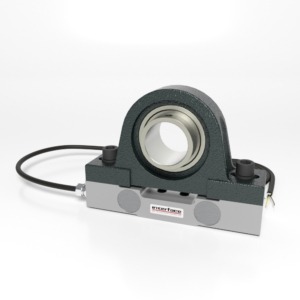 Force measurement systems can measure the contact forces between the wheels and the track. This enables the assessment of wheel-rail interaction, including wheel-rail forces, lateral forces, and rolling resistance. Such data helps optimize track design, wheel profile selection, and maintenance practices to ensure safe and efficient railway operations. Our Pillow Block Load Bearing Load Cell is a great solution for monitoring trains on a track in motion. When our PBLC1 is installed on a track, and the train runs across it, the sensor can provide a signal to a station elsewhere in the world. If any force indicators suggest that there could be a problem with the weight the train is holding or the train itself, the sensor can also trigger an automatic shutdown of the train. These sensors could prevent major damage from train derailments and other train-related incidents by detecting errors before they inflict damage. This is a critically important application as innovators begin to release high-speed trains for cross-country travel.
Force measurement systems can measure the contact forces between the wheels and the track. This enables the assessment of wheel-rail interaction, including wheel-rail forces, lateral forces, and rolling resistance. Such data helps optimize track design, wheel profile selection, and maintenance practices to ensure safe and efficient railway operations. Our Pillow Block Load Bearing Load Cell is a great solution for monitoring trains on a track in motion. When our PBLC1 is installed on a track, and the train runs across it, the sensor can provide a signal to a station elsewhere in the world. If any force indicators suggest that there could be a problem with the weight the train is holding or the train itself, the sensor can also trigger an automatic shutdown of the train. These sensors could prevent major damage from train derailments and other train-related incidents by detecting errors before they inflict damage. This is a critically important application as innovators begin to release high-speed trains for cross-country travel.
Smart Trucking Weighing Solution
In this use case, a smart transportation trucking company truck company needs to record the weight or loads being carried precisely. They would like a wireless weighbridge to transmit, log, and display the results in real-time. Interface suggests installing multiple WTS 1200 LowProfile™ Load Cells under a weighing bridge. When a truck drives over it, the load cells will transmit the force results wirelessly to the WTS-BS-4 Industrial Base Station connected to the customer’s PC with the provided Log100 software. The WTS-LD2 Wireless Large LED Display can also display the weight inside of the driver monitor at all times.
Smart Vehicle Crash Walls
Improving vehicle safety is smart. Interface suggests using multiple 3A400 3-Axis Force Load Cells for this use case and attaching them to the back of a cement crash wall. When connected to the BX8-HD44 Interface BlueDAQ Series Data Acquisition System, force result measurements will be recorded and displayed on a computer. The sensors measure the force of impact for all their different vehicle crash testing demonstrations, providing high-accuracy data to make the vehicles safer.
Electric Vehicle Structural Battery Testing
As electric vehicles push advancements in efficiency gains, structural battery packaging is at the forefront for optimization in smart transportation. This drives the need to validate structural battery pack design in terms of life expectancy against design targets and crash test compliance and survivability. Interface’s solution to this challenge included the 1100 Ultra-Precision LowProfile Load Cells in line with hydraulic or electromechanical actuators in the customer’s test stand. Also utilized were 6A 6-Axis Load Cells to capture reactive forces transmitting through pack structure. Multi-axis measurement brought greater system-level insight and improved product success. The structural tests validated the battery pack’s strong structural design using this solution.
Interface solutions for smart transportation are growing alongside the pace of innovation as we work with industry demands to provide solutions for what comes next.
Read more in our case study Interface’s Crucial Role in Vehicle and Urban Mobility Markets
ADDITIONAL RESOURCES
Making Products Smarter with Interface OEM Solutions
Testing Labs Choose Interface High Accuracy Products
Modernizing Infrastructure with Interface Sensor Technologies
Interface’s Steering Role in All Types of Transportation
Interface Weighing Solutions and Complete Systems
EV Battery Testing Solutions Utilize Interface Mini Load Cells
Bridge Seismic Force Monitoring Solution App Note
Testing for Commercial Drones and Parcel Delivery

